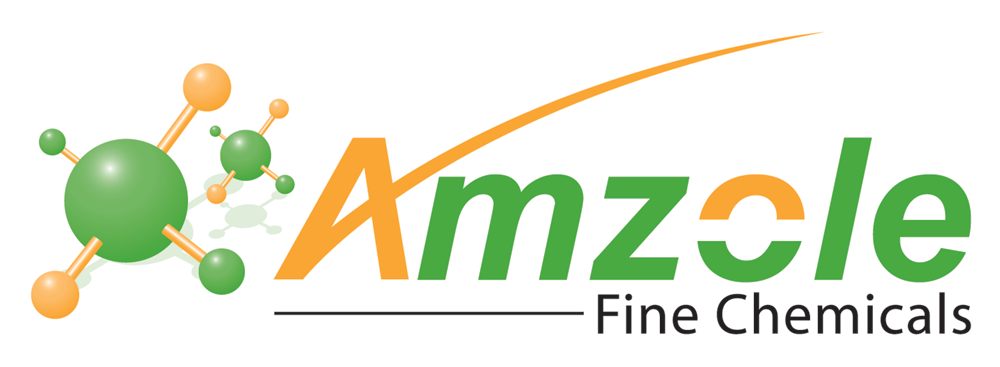Ammonium Sulphate MSDS 2016
Chemical Product & Company Identification :
| Chemical Product | Company Identification |
|---|---|
| MSDS Name: Ammonium Sulphate | Amzole India Pvt. Ltd. |
| CAS Number: 7783-20-2 | 41, Udhyog Vihar |
| Synonymous: Ammonium Sulphate | Sukher, Udaipur 313004 |
| India. |
Composition & Information on Ingredients
| Molecular Formula | (NH4)2 SO4 |
|---|---|
| Molecular Weight | 132 |
| Chemical Family | Inorganic Compound |
| Content (W/W) | 98.0% (min.) |
Hazards Identification Emergency Overview
| Potential Health Hazards | |
|---|---|
| Ingestion | Corrosive and harmful if swallowed. May cause gastric problem. |
| Eyes | Eye irritation is possible. |
| Inhalation | Avoid inhalation of dust. |
| Skin | Irritating to skin. |
| Use local exhaust ventilation. | |
| Wear NIOSH certified respirators and goggles. | |
| Wear chemical resistant protective gloves and clothing. | |
First Aid Measures
General Advice: Remove contaminated clothing.
Inhalation:Remove the affected individual into fresh air and keep the person calm. If not breathing, give artificial respiration. If breathing is difficult, give oxygen.
Skin: Wash affected areas thoroughly with soap and water. Remove contaminated clothing and wash it before re-use. If symptoms persist, immediate medical attention is required.
Eyes: Incase of contact with eyes, rinse immediately for at least 15 minutes with plenty of water. Immediate medical attention is required.
Ingestion: Rinse mouth and then drink plenty of water. Do not induce vomiting. Never induce vomiting or give anything by mouth if the victim is unconscious or having convulsions. Immediate medical attention is required.
Fire Fighting Measures
Specific Hazards During Firefighting: The product itself does not burn.
Accidental Release Measures
Personal Precautions in Spill: Avoid direct contact with skin, eyes and clothing. Avoid breathing dust.
Environmental Precautions: Prevent contamination of soil, drains and surface water.
Spill Clean Up Methods:Vacuum or wet-sweep and place into suitable closable, labeled container for disposal. Wash the area clean with water and detergent, observing environmental requirements.
Handling & Storage
Handling:
Product should be used in accordance with good industrial principles for handling and
storing of hazardous chemicals. Ensure good ventilation and local exhaust extraction in
work place. Avoid creating or raising dust.
Storage:
Store in a cool, dry, well ventilated place, in securely closed original container.
Exposure controls and Personal Protection
| Personal Protective Equipment | |
|---|---|
| Eyes | Wear tightly fitting safety goggles (chemical goggles) |
| Skin | Wear appropriate protective gloves to prevent skin exposure. Consult with glove manufacturer for testing data. |
| Ventilation | Provide adequate general and local exhaust ventilation. |
| Respirators | Wear a NIOSH certified (or equivalent) particulate respirators. |
| General Safety and Hygiene Measures | Eye wash fountains and safety showers must be easily accessible. Avoid inhalation of dust. Wear protective clothing as necessary to prevent contact. |
Physical and Chemical properties
Physical State: Solid
State of Matter: Solid
Colour: Off-White
Odour: Odourless
pH: 6.0
Melting Point: 235°C
Density: 0.961 g/cm3
Water Solubility: 75g/100g water at 20°C
Bulk Density: 1000-1100 kg/m3
Solubility in other solvents: Medium: acetone-like, Insoluble.
Stability and Reactivity
Stability: Stable under normal conditions of use.
Conditions to Avoid: Avoid excessive heat.
Materials to Avoid:Strong Alkalies. Organic and Inorganic nitrates.
Hazardous Decomp. Products: Thermal Decomposition may release noxious, toxic or corrosive gases or vapours. When strongly heated, ammonium sulphate decomposes without melting, releasing ammonia or amines, oxides or nitrogen; it slowly transforms into acid sulphate.
Toxicological Information
Acute Oral Toxicity: Ammonium Sulphate
LD50 rat: 2840 mg/kg (literal value)
Ecological Information
Eco-toxicity Effects
Toxicity to Fish: Ammonium Sulphate:
LC50 Brachydanio rerio: 480 mg/l; 96 h (literal value)
Toxicity to daphnia and other aquatic invertebrates:
Ammonium Sulphate:
LC50 Daphnia magna: >100 mg/l; 96 h (literal value)
Disposal consideration
Product: Dispose of as special waste in compliance with local and national regulations
Contaminated Packaging: Packaging that cannot be decontaminated must be disposed of in the same way as the material itself.
Transport Information
Further Information: Not classified as dangerous in the meaning of transport regulations.
Regulatory Information
Risk Phrases: Not Classified
Safety Phrases: Not Classified
IMPORTANT: WHILE THE DESCRIPTIONS, DESIGNS, DATA AND INFORMATION CONTAINED HEREIN ARE PRESENTED IN GOOD FAITH AND BELIEVED TO BE ACCURATE, IT IS PROVIDED FOR YOUR GUIDANCE ONLY. BECAUSE MANY FACTORS MAY AFFECT PROCESSING OR APPLICATION/USE, WE RECOMMEND THAT YOU MAKE TESTS TO DETERMINE THE SUITABILITY OF A PRODUCT FOR YOUR PARTICULAR PURPOSE PRIOR TO USE. NO WARRANTIES OF ANY KIND, EITHER EXPRESSED OR IMPLIED, INCLUDING WARRANTIES OF MERCHANTABILITY OR FITNESS FOR A PARTICULAR PURPOSE, ARE MADE REGARDING PRODUCTS DESCRIBED OR DESIGNS, DATA OR INFORMATION SET FORTH, OR THAT THE PRODUCTS, DESIGNS, DATA OR INFORMATION MAY BE USED WITHOUT INFRINGING THE INTELLECTUAL PROPERTY RIGHTS OF OTHERS. IN NO CASE SHALL THE DESCRIPTIONS, INFORMATION, DATA OR DESIGNS PROVIDED BE CONSIDERED A PART OF OUR TERMS AND CONDITIONS OF SALE. FURTHER, YOU EXPRESSLY UNDERSTAND AND AGREE THAT THE DESCRIPTIONS, DESIGNS, DATA, AND INFORMATION FURNISHED BY AMZOLE HEREUNDER ARE GIVEN GRATIS AND AMZOLE ASSUMES NO OBLIGATION OR LIABILITY FOR THE DESCRIPTION, DESIGNS, DATA AND INFORMATION GIVEN OR RESULTS OBTAINED, ALL SUCH BEING GIVEN AND ACCEPTED AT YOUR RISK.

